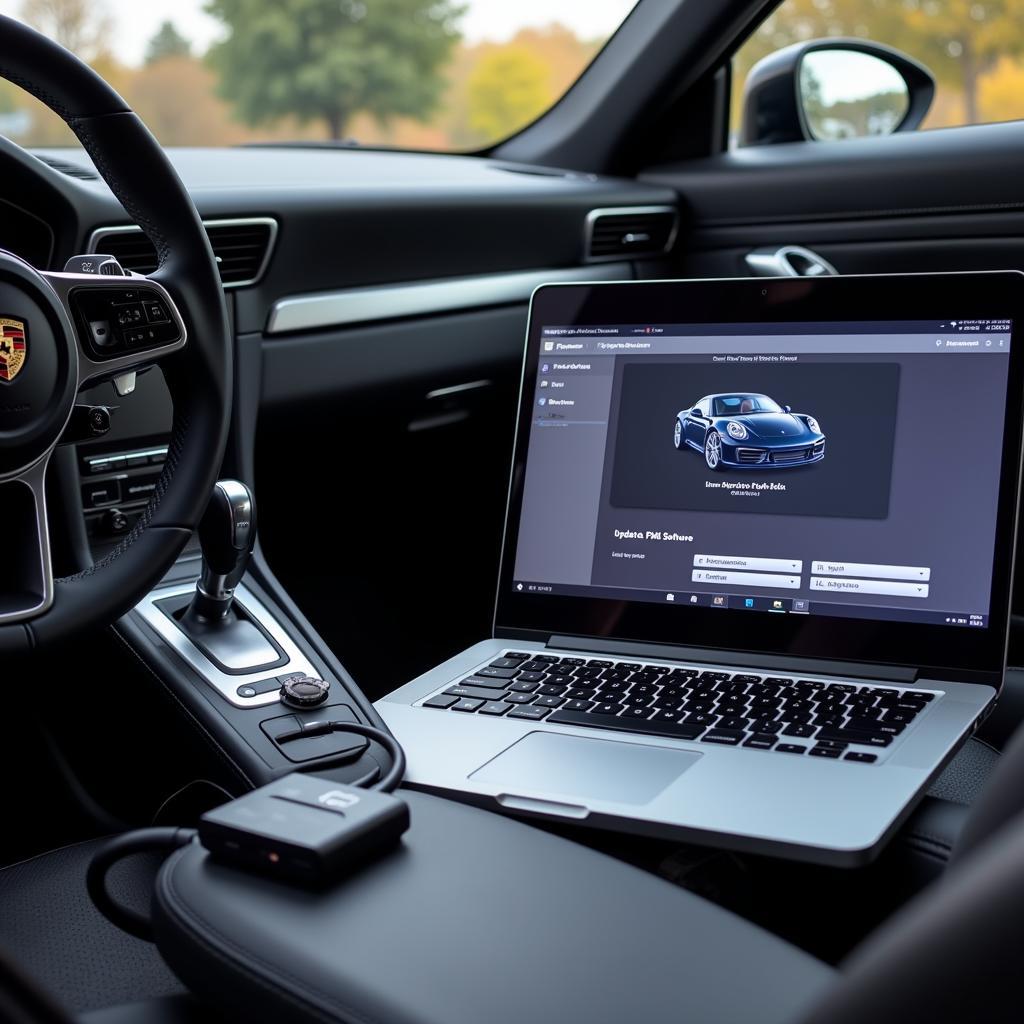Understanding the intricate network of relays in your Porsche Cayenne is crucial, especially when troubleshooting electrical issues. This guide provides a detailed look at the diagnostic relay location for various Cayenne models, helping you pinpoint and resolve problems effectively.
Decoding the Importance of Porsche Cayenne Diagnostic Relays
Relays act as electrical switches, controlling the flow of current to various components within your Cayenne. The diagnostic relay, in particular, plays a critical role in enabling communication between the vehicle’s onboard diagnostic system and external diagnostic tools. This communication is essential for retrieving diagnostic trouble codes (DTCs), monitoring real-time data, and performing various diagnostic tests.
Common Symptoms of a Faulty Diagnostic Relay
A malfunctioning diagnostic relay can disrupt the diagnostic process, leading to difficulties in identifying and rectifying issues. Here are some telltale signs that your Cayenne’s diagnostic relay might be faulty:
- Inability to establish communication with diagnostic tools: This is often the most prominent indicator. If your scanner or code reader fails to connect to your Cayenne’s onboard system, a faulty diagnostic relay could be the culprit.
- Erratic or inconsistent communication: Intermittent connection drops or garbled data during diagnosis can also signal a problem with the diagnostic relay.
- Absence of power to the OBD-II port: The diagnostic relay often supplies power to the OBD-II port. If there’s no power at the port, it could point to a faulty relay or a related wiring issue.
Locating the Diagnostic Relay in Your Porsche Cayenne
The location of the diagnostic relay can vary slightly depending on the model year and specific configuration of your Porsche Cayenne. However, it’s typically found within the fuse box located either in the engine compartment or inside the vehicle cabin.
Engine Compartment Fuse Box:
- Open the hood and secure it properly.
- Locate the fuse box, usually positioned near the battery or on the fender well.
- Consult your owner’s manual or the fuse box cover diagram to identify the diagnostic relay. It’s often labeled as “DME Control Unit” or “Diagnostic Socket.”
Interior Fuse Box:
- Check your owner’s manual for the location of the interior fuse box. It’s commonly found beneath the dashboard on the driver’s side or in the glove compartment.
- Open the fuse box cover and refer to the diagram to pinpoint the diagnostic relay.
Testing the Diagnostic Relay
Once you’ve located the diagnostic relay, you can perform a simple test to check its functionality:
- Visual Inspection: Begin by visually inspecting the relay for any signs of damage, such as burning, corrosion, or loose connections.
- Relay Swap: If you have a known-good relay with the same part number, try swapping it with the suspect diagnostic relay. If the issue resolves, you’ve identified the faulty component.
- Voltage Test: Use a multimeter to test for voltage across the relay’s terminals. Refer to a wiring diagram for your specific model to determine the correct terminals for testing.
Expert Insight from Mark Stevenson, ASE Certified Master Technician: “Always exercise caution when working with electrical components. Disconnect the negative battery terminal before handling any fuses or relays to prevent electrical shorts.”
Replacing the Diagnostic Relay
If testing confirms that the diagnostic relay is faulty, replacing it is a relatively straightforward procedure:
- Disconnect the Negative Battery Terminal: Ensure the ignition is switched off and disconnect the negative battery cable.
- Remove the Faulty Relay: Gently pry out the old diagnostic relay using a relay puller or a small flathead screwdriver.
- Install the New Relay: Align the pins on the new relay with the socket and press it firmly into place until it clicks.
- Reconnect the Battery: Reconnect the negative battery terminal and secure it.
Seeking Professional Assistance
While replacing a diagnostic relay is often manageable for DIY enthusiasts, seeking professional help is recommended if:
- You’re uncomfortable working with electrical components.
- You’re unsure about the location or testing procedure for the diagnostic relay.
- The problem persists even after replacing the relay.
Our team at Cardiagtech specializes in Porsche diagnostics, programming, and remote software installations. We have the expertise and equipment to diagnose and resolve complex electrical issues in your Cayenne.
Contact us today at +1 (641) 206-8880 or email us at CARDIAGTECH[email protected] to schedule an appointment. Our workshop is located at 276 Reock St, City of Orange, NJ 07050, United States.
FAQs
1. Can I drive my Porsche Cayenne with a faulty diagnostic relay?
Yes, you can typically drive your Cayenne with a faulty diagnostic relay. However, it’s not recommended as it will hinder proper diagnostics and could potentially mask other underlying issues.
2. Where can I find the correct diagnostic relay part number for my Cayenne?
The correct relay part number can be found in your owner’s manual or by contacting a Porsche dealership.
3. Are there any other components that could cause similar symptoms?
Yes, a faulty OBD-II port, wiring issues, or problems with the engine control unit (ECU) can also lead to diagnostic communication problems.
4. Can I use any diagnostic tool with my Porsche Cayenne?
It’s recommended to use a high-quality diagnostic tool specifically designed for Porsche vehicles to ensure compatibility and accurate results.
5. How often should I check my Cayenne’s diagnostic relay?
While relays are generally durable, it’s a good practice to visually inspect them periodically for any signs of wear or damage.

